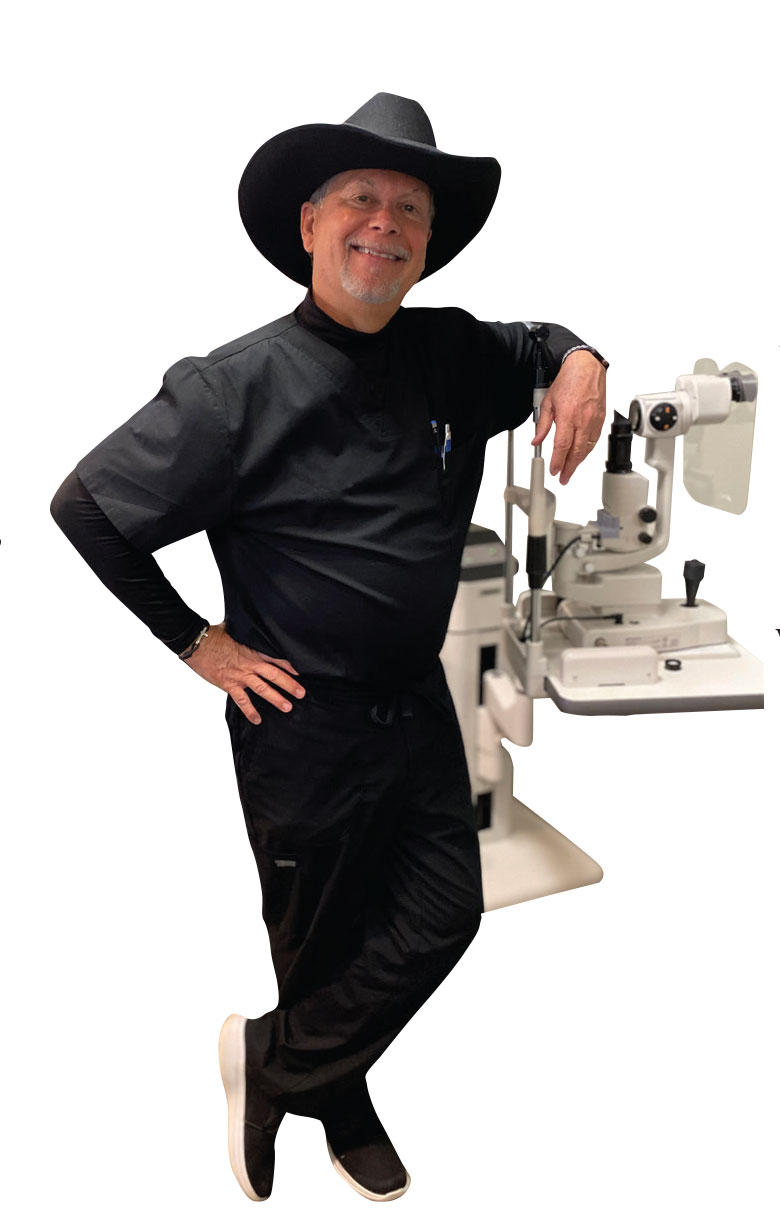 |
Put it in writing. If you don’t put it in writing, it doesn’t count. Simple as that. It doesn’t exist. It was never even done, after all.
No, I didn’t learn that in optometry school. My office manager, who also happens to be my wife, taught me that with a lot of patience on her part because, trust me, I am not someone who learns easily. It took me 10 years before I remembered to write down intraocular pressures (IOPs) on patient charts. I may or may not have considered IOPs as being pass/fail up until that point. If a pressure was high, I wrote it on the chart. If the pressure was acceptable, why waste the ink? That was my thinking at least.
My wife very often reprimanded me that if a patient’s IOP was not written on the chart, it meant I did not run the test at all—even if I did, which I always did. I tried unsuccessfully to convince her time and time again that saving ink would also save the endangered Bengal tigers. She just would not listen.
So, ever the contrarian, one time I wrote on a patient’s chart that their electromagnetic aura was within normal limits. I figured if it is true that not writing down the result of a test meant I did not do the test even if I did, then it would stand to reason that if I wrote down the results of a test, it meant I did the test even if I didn’t.
 |
This floated like a cinderblock. My wife was not impressed by my so-called wit. Suffice it to say, I never crossed her again. Though, I do often wonder if I ever whited out that entry on the poor patient’s chart.
So, yes, write your findings down. And make sure you do the test in the first place, too.
Now, the tricky part is this: putting it in writing does not always make it so. This is why they invented lawyers. I had always thought they invented lawyers so everyone would see that we all have something in common… i.e., making fun of lawyers. My dad was a lawyer. I chose not to make fun of lawyers when he was around. This was one of my top 10 good decisions in life. After all, his lawyering put me through school.
When I sold my practice, against my protestations the buyers insisted I take inventory of every spectacle frame in the building, using the current listed wholesale value of each frame to come up with a value for the inventory as a whole. If the value was less than a certain amount, I would have to reimburse them the difference. If the value was greater than said amount, they would have to pay me the difference.
This was in writing and, therefore, pure and true, right? Wrong. The value was around $10,000 higher than expected (as I had warned my practice’s buyers it would be when I wanted to just leave the frames out of the flat-fee deal), and to this day, I still have never seen a dime of the money they agreed to pay in writing. So much for being bound by your words. Unfortunately, it wasn’t worth the $10,000 in legal fees it would cost to force them to pay. Them: 1. Me: 0.
But charts are different. My wife was right. Information has to be clearly stated on the chart.
I have previously mentioned that Dr. Bodie, the OD who hired me out of school and sold me his practice when he retired, had also insisted my charting be so complete that another doctor could pick up a chart and then start taking care of the patient in question without skipping a beat. Between Dr. B and my relentless wife, they’ve convinced me to work harder to do just that.
Imagine my surprise when, years later, I was looking through Dr. Bodie’s old charts and found thousands of 7x9 notecards that only had the patient’s name on them… no other information. Well played, George.
Writing it down does not always make it so. But it turns out that not writing it down can hurt Bengal tigers. That’s the moral of the story. Don’t forget it. Chart on!
Dr. Vickers received his optometry degree from the Pennsylvania College of Optometry in 1979 and was clinical director at Vision Associates in St. Albans, WV, for 36 years. He is now in private practice in Dallas, where he continues to practice full-scope optometry. He has no financial interests to disclose.

